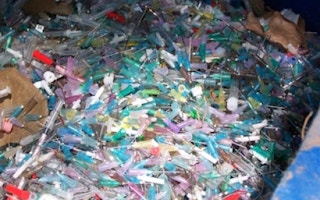The Health Ministry has devised a plan to collect all medical waste every day, with 70 per cent of solid waste to be treated by 2015, according to a source from the Health Environment Management Department.
In recent years, cholera and influenza A virus subtype H1N1 have reappeared, most of which are caused by environmental pollution, particularly improper treatment of medical waste.
Dr Nguyen Huy Nga, director of the department, said that Viet Nam had more than 13,600 hospitals and medical establishments, of which only 44 per cent had medical wastewater treatment systems.
In addition, most of the medical waste-water treatment systems at the hospitals were overloaded or in bad shape.
As a result, most waste was not treated but discharged directly into the environment, or was treated improperly.
Medical waste water often contains 20 per cent of hazardous substances that could cause disease if not treated properly.
Healthcare facilities each day discharge between 120,000 and 150,000 cubic metres of waste water and between 350 and 400 tonnes of healthcare waste, including 42 tonnes of hazardous waste, according to Nga.
“The figure is estimated to double by 2015,” he said.
Although the 10-year-old Decision No 64/2003/QD-TTg requires organisations that cause serious pollution to treat their waste, 80 hospitals still remain on the list of serious environment polluters.
Directors of many local hospitals said that they acknowledged the importance of waste and wastewater treatment but did not have enough capital for the construction and instalment of such facilities.
In addition, other hospitals do not know how to properly treat solid waste as well as wastewater. Many of them do not have facilities to collect and classify solid waste to cut costs.
Only Ha Noi and HCM City have healthcare incinerators, while other localities treat medical waste by burying it together with daily waste.
To help Viet Nam settle its medical waste problems, the World Bank has lent US$150 million to treat medical waste water for a three-year period.
However, Nga said that Viet Nam would need capital 10 times higher than the Bank’s fund to build waste water and solid waste treatment facilities at all medical establishments nationwide.
The Government, he said, should develop a legal framework and allow healthcare experts to participate in the construction of hospitals to ensure that activities would not cause pollution.
Nga also emphasised the need to further educate medical workers, including doctors, about the importance of sorting rubbish at the source of discharge to improve environmental protection.










